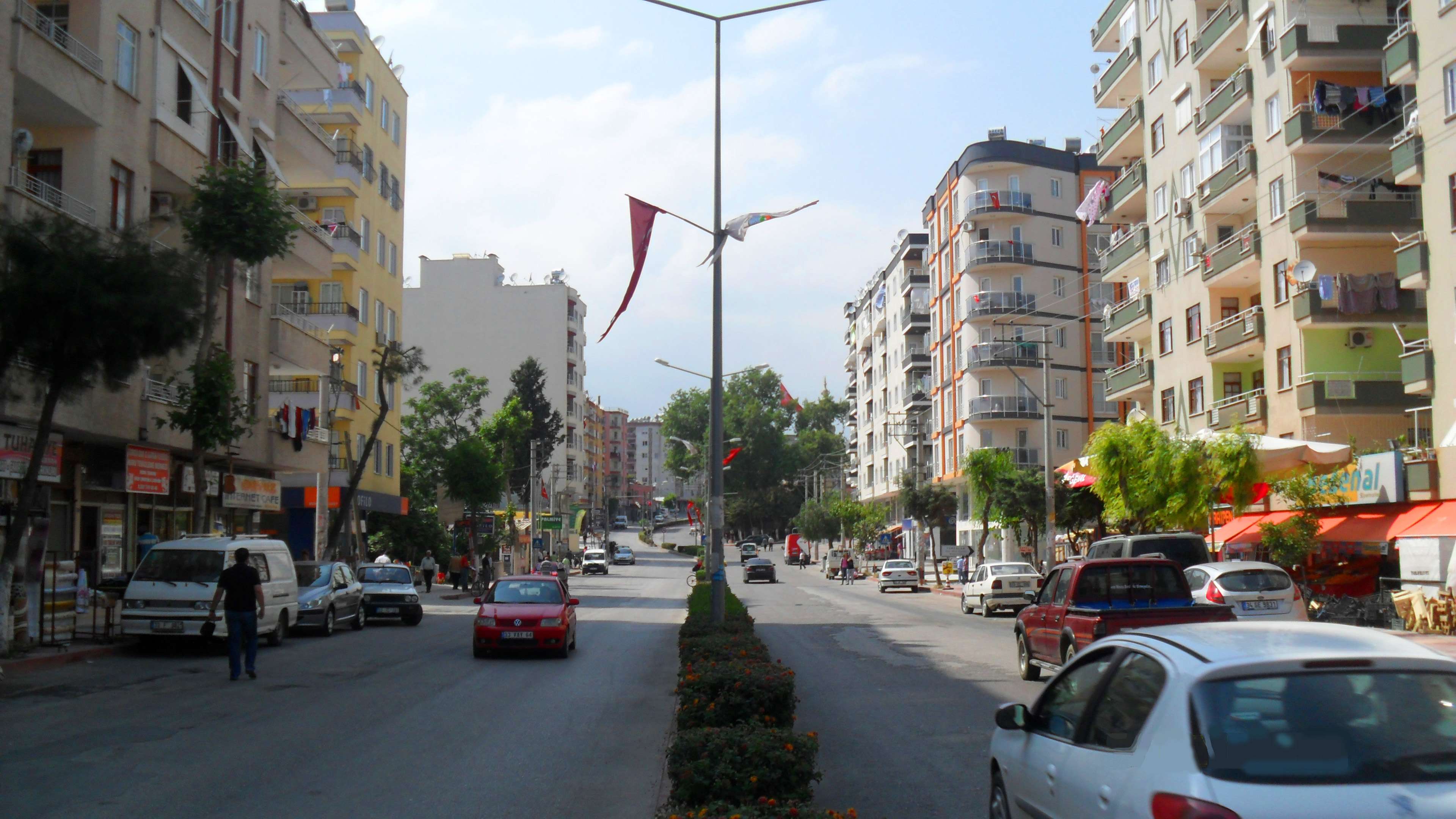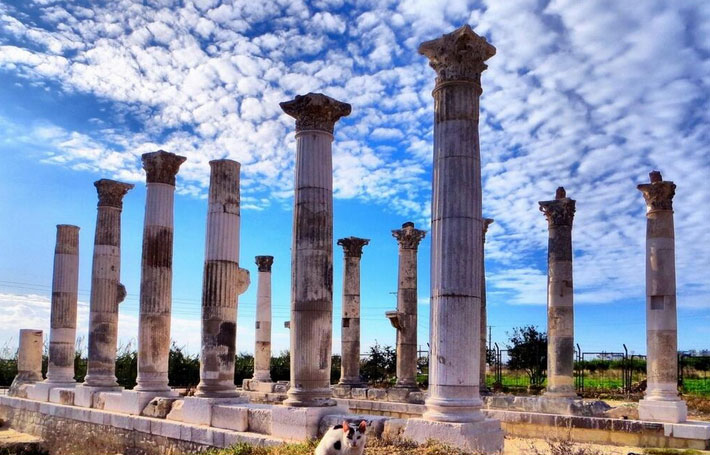|
Atlılar, Mersin
Atlılar (formerly ''Sadiye'') is a neighbourhood in the municipality and district of Toroslar, Mersin Province, Turkey. Its population is 155 (2022). It is a high-altitude village in the Taurus Mountains. Distance to Mersin is . The village inhabitants are mostly of Circassian (Adyghe) origin. Following Russian–Circassian War in 1864, Adyghe people were expelled from Caucasus, their homeland, to the Ottoman Empire where they were settled in various regions in the Ottoman Empire. The earlier settlement of Circassians in Mersin was Mezitli at the Mediterranean Sea The Mediterranean Sea is a sea connected to the Atlantic Ocean, surrounded by the Mediterranean Basin and almost completely enclosed by land: on the north by Western and Southern Europe and Anatolia, on the south by North Africa, and on the ea ... side. But they asked for cooler and high-altitude places and finally they were settled in this village. They named the village after Sadiye, a Circassian born female ... [...More Info...] [...Related Items...] OR: [Wikipedia] [Google] [Baidu] |
Toroslar
Toroslar is a municipality and district governorate in Greater Mersin, Turkey. Mersin is one of 30 metropolitan centers in Turkey with more than one municipality within city borders. Now in Mersin there are four second-level municipalities in addition to Greater Mersin (''büyükşehir'') municipality. The mayor of Toroslar is Atsız Afşin Yılmaz (member of MHP, elected in 2019)). Geography Toroslar composes the northern quarters of Mersin at about . The sister municipality of Akdeniz lies in the southeast. Müftü River and the sister municipality of Yenişehir lie in the south west. Southern slopes of Toros mountains lie in the north. Mersin intrafaith cemetery is in Toroslar. History Yumuktepe, the ruins of one of the earliest human settlements in Anatolia is in Toroslar. Excavations by John Garstang and Seton Lloyd both of which were directors of the British Institute of Archaeology at Ankara, revealed 23 levels of occupation, the earliest dating from c. 6300 BC. T ... [...More Info...] [...Related Items...] OR: [Wikipedia] [Google] [Baidu] |
Mersin Province
Mersin Province ( tr, ), formerly İçel Province ( tr, ), is a province in southern Turkey, on the Mediterranean coast between Antalya and Adana. The provincial capital and the biggest city in the province is Mersin, which is composed of four municipalities and district governorates: Akdeniz, Mezitli, Toroslar and Yenişehir. Next largest is Tarsus, the birthplace of Paul the Apostle. The province is considered to be a part of the geographical, economical and cultural region of Çukurova, which covers the provinces of Mersin, Adana, Osmaniye and Hatay. The capital of the province is the city of Mersin. Etymology The province is named after its biggest city Mersin. Mersin was named after the aromatic plant genus ''Myrsine'' ( el, Μυρσίνη, tr, mersin) in the family Primulaceae, a myrtle that grows in abundance in the area. The 17th-century Ottoman traveler Evliya Çelebi has recorded in his ''Seyahatnâme'' that there was also a clan named Mersinoğulları in ... [...More Info...] [...Related Items...] OR: [Wikipedia] [Google] [Baidu] |
Turkey
Turkey ( tr, Türkiye ), officially the Republic of Türkiye ( tr, Türkiye Cumhuriyeti, links=no ), is a list of transcontinental countries, transcontinental country located mainly on the Anatolia, Anatolian Peninsula in Western Asia, with a East Thrace, small portion on the Balkans, Balkan Peninsula in Southeast Europe. It shares borders with the Black Sea to the north; Georgia (country), Georgia to the northeast; Armenia, Azerbaijan, and Iran to the east; Iraq to the southeast; Syria and the Mediterranean Sea to the south; the Aegean Sea to the west; and Greece and Bulgaria to the northwest. Cyprus is located off the south coast. Turkish people, Turks form the vast majority of the nation's population and Kurds are the largest minority. Ankara is Turkey's capital, while Istanbul is its list of largest cities and towns in Turkey, largest city and financial centre. One of the world's earliest permanently Settler, settled regions, present-day Turkey was home to important Neol ... [...More Info...] [...Related Items...] OR: [Wikipedia] [Google] [Baidu] |
TÜİK
Turkish Statistical Institute (commonly known as TurkStat; tr, Türkiye İstatistik Kurumu or TÜİK) is the Turkish government agency commissioned with producing official statistics on Turkey, its population, resources, economy, society, and culture. It was founded in 1926 and has its headquarters in Ankara Ankara ( , ; ), historically known as Ancyra and Angora, is the capital of Turkey. Located in the central part of Anatolia, the city has a population of 5.1 million in its urban center and over 5.7 million in Ankara Province, maki .... Formerly named as the State Institute of Statistics (Devlet İstatistik Enstitüsü (DİE)), the Institute was renamed as the Turkish Statistical Institute on November 18, 2005. References External linksOfficial website of the institute National statistical services Statistical Organizations established in 1926 Organizations based in Ankara {{Sci-org-stub ... [...More Info...] [...Related Items...] OR: [Wikipedia] [Google] [Baidu] |
Taurus Mountains
The Taurus Mountains ( Turkish: ''Toros Dağları'' or ''Toroslar'') are a mountain complex in southern Turkey, separating the Mediterranean coastal region from the central Anatolian Plateau. The system extends along a curve from Lake Eğirdir in the west to the upper reaches of the Euphrates and Tigris rivers in the east. It is a part of the Alpide belt in Eurasia. Etymology The mountain range under the current name was mentioned in ''The Histories'' by Polybius as Ταῦρος (''Taûros''). Heinrich Kiepert writes in ''Lehrbuch der alten Geographie'' that the name was borrowed into Ancient Greek from the Semitic (Old Aramaic) root טורא ''ṭūrā'', meaning "mountain". Geography The Taurus mountains are divided into three chains from west to east as follows; * Western Taurus (Batı Toroslar) *Central Taurus (Orta Toroslar) *Southeastern Taurus (Güneydoğu Toroslar) Western Taurus The Western Taurus Mountains form an arc around the Gulf of Antalya. It includes th ... [...More Info...] [...Related Items...] OR: [Wikipedia] [Google] [Baidu] |
Circassians
The Circassians (also referred to as Cherkess or Adyghe; Adyghe and Kabardian: Адыгэхэр, romanized: ''Adıgəxər'') are an indigenous Northwest Caucasian ethnic group and nation native to the historical country-region of Circassia in the North Caucasus. As a consequence of the Circassian genocide, which was perpetrated by the Russian Empire in the 19th century during the Russo-Circassian War, most Circassians were exiled from their homeland in Circassia to modern-day Turkey and the rest of the Middle East, where the majority of them are concentrated today. The Unrepresented Nations and Peoples Organization estimated in the early 1990s that there are as many as 3.7 million Circassians in diaspora in over 50 countries. The Circassian language is the ancestral language of the Circassian people, and Islam has been the dominant religion among them since the 17th century. Circassia has been subject to repeated invasions since ancient times; its isolated terrain coupled wi ... [...More Info...] [...Related Items...] OR: [Wikipedia] [Google] [Baidu] |
Russian–Circassian War
The Russo-Circassian War ( ady, Урыс-адыгэ зауэ, translit=Wurıs-adığə zawə; ; 1763–1864; also known as the Russian Invasion of Circassia) was the invasion of Circassia by Russia, starting in July 17, 1763 ( O.S) with the Russian Empire assuming authority in Circassia, followed by the Circassian refusal,Henze 1992 and ending 101 years later with the last army of Circassia defeated on 21 May 1864 ( O.S), making it exhausting and casualty-heavy for both sides. The Circassians fought the Russians longer than all the other peoples of the Caucasus,. and the Russo-Circassian War was the longest war both Russia and Circassia have ever fought. During and after the war, the Russian Empire employed a genocidal strategy of systematically massacring civilians which resulted in the Circassian genocideL.V.Burykina. ''Pereselenskoye dvizhenie na severo-zapagni Kavakaz''. Reference in King.. where up to 1,500,000 Circassians (85-97% of the total population) were either kille ... [...More Info...] [...Related Items...] OR: [Wikipedia] [Google] [Baidu] |
Caucasus
The Caucasus () or Caucasia (), is a region between the Black Sea and the Caspian Sea, mainly comprising Armenia, Azerbaijan, Georgia, and parts of Southern Russia. The Caucasus Mountains, including the Greater Caucasus range, have historically been considered as a natural barrier between Eastern Europe and Western Asia. Mount Elbrus in Russia, Europe's highest mountain, is situated in the Western Caucasus. On the southern side, the Lesser Caucasus includes the Javakheti Plateau and the Armenian highlands, part of which is in Turkey. The Caucasus is divided into the North Caucasus and South Caucasus, although the Western Caucasus also exists as a distinct geographic space within the North Caucasus. The Greater Caucasus mountain range in the north is mostly shared by Russia and Georgia as well as the northernmost parts of Azerbaijan. The Lesser Caucasus mountain range in the south is occupied by several independent states, mostly by Armenia, Azerbaijan, and Georgia, but also ... [...More Info...] [...Related Items...] OR: [Wikipedia] [Google] [Baidu] |
Ottoman Empire
The Ottoman Empire, * ; is an archaic version. The definite article forms and were synonymous * and el, Оθωμανική Αυτοκρατορία, Othōmanikē Avtokratoria, label=none * info page on book at Martin Luther University) // CITED: p. 36 (PDF p. 38/338) also known as the Turkish Empire, was an empire that controlled much of Southeast Europe, Western Asia, and Northern Africa between the 14th and early 20th centuries. It was founded at the end of the 13th century in northwestern Anatolia in the town of Söğüt (modern-day Bilecik Province) by the Turkoman tribal leader Osman I. After 1354, the Ottomans crossed into Europe and, with the conquest of the Balkans, the Ottoman beylik was transformed into a transcontinental empire. The Ottomans ended the Byzantine Empire with the conquest of Constantinople in 1453 by Mehmed the Conqueror. Under the reign of Suleiman the Magnificent, the Ottoman Empire marked the peak of its power and prosperity, as well a ... [...More Info...] [...Related Items...] OR: [Wikipedia] [Google] [Baidu] |
Mezitli
Mezitli is a municipality and district governorate in Greater Mersin, Turkey. Mersin is one of 30 metropolitan centers in Turkey with more than one municipality within city borders. Now in Mersin there are four second-level municipalities in addition to Greater Mersin (''büyükşehir'') municipality. The Mayor of Mezitli is Neşet Tarhan. Geography Mezitli at about composes the western part of Mersin proper. Southern quarters of Mezitli are popularly known as ''Viranşehir'' ("ruined city") because of the ruins. (see below) Yenişehir, another municipality of Mersin, is to the east of Mezitli, Mediterranean Sea is in the south and Toros Mountains in the north. In the west of Mezitli there are summer houses and coastal villages most of which are specialized in citrus industry. Mezitli River (Liparis of the antiquity) flows within Mezitli. History The ruins of the ancient Greek city of Soli, which was renamed by Roman general Pompey as Pompeipolis (Πομπηιόπολ ... [...More Info...] [...Related Items...] OR: [Wikipedia] [Google] [Baidu] |
Mediterranean Sea
The Mediterranean Sea is a sea connected to the Atlantic Ocean, surrounded by the Mediterranean Basin and almost completely enclosed by land: on the north by Western and Southern Europe and Anatolia, on the south by North Africa, and on the east by the Levant. The Sea has played a central role in the history of Western civilization. Geological evidence indicates that around 5.9 million years ago, the Mediterranean was cut off from the Atlantic and was partly or completely desiccated over a period of some 600,000 years during the Messinian salinity crisis before being refilled by the Zanclean flood about 5.3 million years ago. The Mediterranean Sea covers an area of about , representing 0.7% of the global ocean surface, but its connection to the Atlantic via the Strait of Gibraltar—the narrow strait that connects the Atlantic Ocean to the Mediterranean Sea and separates the Iberian Peninsula in Europe from Morocco in Africa—is only wide. The Mediterranean Sea e ... [...More Info...] [...Related Items...] OR: [Wikipedia] [Google] [Baidu] |





